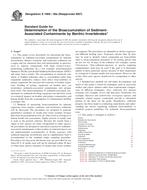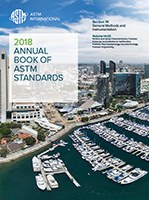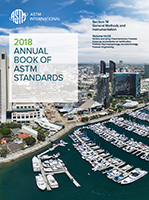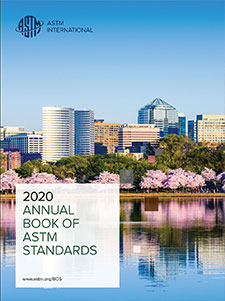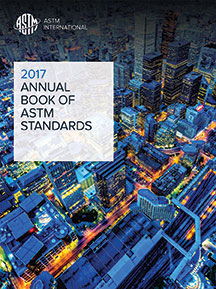Original price was: $91.00.$54.60Current price is: $54.60.
Standard Guide for Determination of the Bioaccumulation of Sediment-Associated Contaminants by Benthic Invertebrates
standard by ASTM International, 08/01/2007
Description
1.1 This guide covers procedures for measuring the bioaccumulation of sediment-associated contaminants by infaunal invertebrates. Marine, estuarine, and freshwater sediments are a major sink for chemicals that sorb preferentially to particles, such as organic compounds with high octanol-water-partitioning coefficients (K
1.2 Methods of measuring bioaccumulation by infaunal organisms from marine, estuarine, and freshwater sediments will be discussed. The procedures are designed to generate quantitative estimates of steady-state tissue residues because data from bioaccumulation tests are often used in ecological or human health risk assessments. Eighty percent of steady-state is used as the general criterion. Because the results from a single or few species are often extrapolated to other species, the procedures are designed to maximize exposure to sediment-associated contaminants so that residues in untested species are not underestimated systematically. A 28-day exposure with sediment-ingesting invertebrates and no supplemental food is recommended as the standard single sampling procedure. Procedures for long-term and kinetic tests are provided for use when 80 % of steady-state will not be obtained within 28 days or when more precise estimates of steady-state tissue residues are required. The procedures are adaptable to shorter exposures and different feeding types. Exposures shorter than 28 days may be used to identify which compounds are bioavailable (that is, bioaccumulation potential) or for testing species that do not live for 28 days in the sediment (for example, certain Chironomus). Non-sediment-ingestors or species requiring supplementary food may be used if the goal is to determine uptake in these particular species because of their importance in ecological or human health risk assessments. However, the results from such species should not be extrapolated to other species.
1.3 Standard test methods are still under development, and much of this guide is based on techniques used in successful studies and expert opinion rather than experimental comparisons of different techniques. Also, relatively few marine/estuarine (for example, Nereis and Macoma), freshwater (for example, Diporeia and Lumbriculus variegatus) species, and primarily neutral organic compounds provide a substantial portion of the basis for the guide. Nonetheless, sufficient progress has been made in conducting experiments and understanding the factors regulating sediment bioavailability to establish general guidelines for sediment bioaccumulation tests.
1.4 This guide is arranged as follows:
1.5 Field-collected sediments may contain toxic materials, including pathogens, and should be treated with caution to minimize exposure to workers. Worker safety must also be considered when using laboratory-dosed sediments containing toxic compounds.
1.6 This guide may involve the use of non-indigenous test species. The accidental establishment of non-indigenous species has resulted in substantial harm to both estuarine and freshwater ecosystems. Adequate precautions must therefore be taken against the accidental release of any non-indigenous test species or associated flora or fauna.
1.7 The values stated in SI units are to be regarded as the standard.
This standard does not purport to address all of the safety concerns, if any, associated with its use. It is the responsibility of the user of this standard to establish appropriate safety and health practices and determine the applicability of regulatory limitations prior to use. Specific precautionary statements are given in Section 8.
Product Details
- Published:
- 08/01/2007
- Number of Pages:
- 55
- File Size:
- 1 file , 660 KB
- Redline File Size:
- 2 files , 1.1 MB
- Note:
- This product is unavailable in Russia, Ukraine, Belarus

